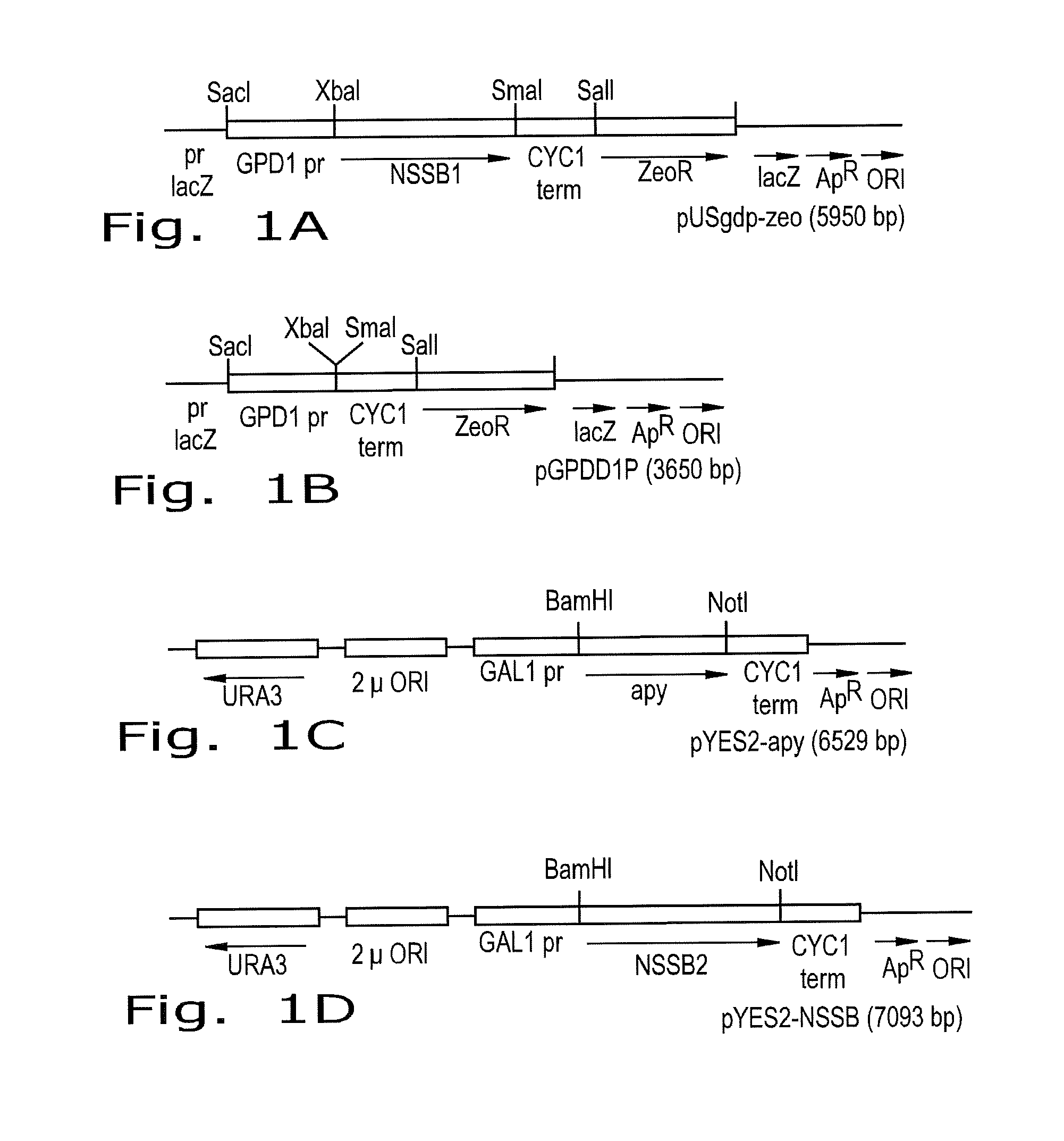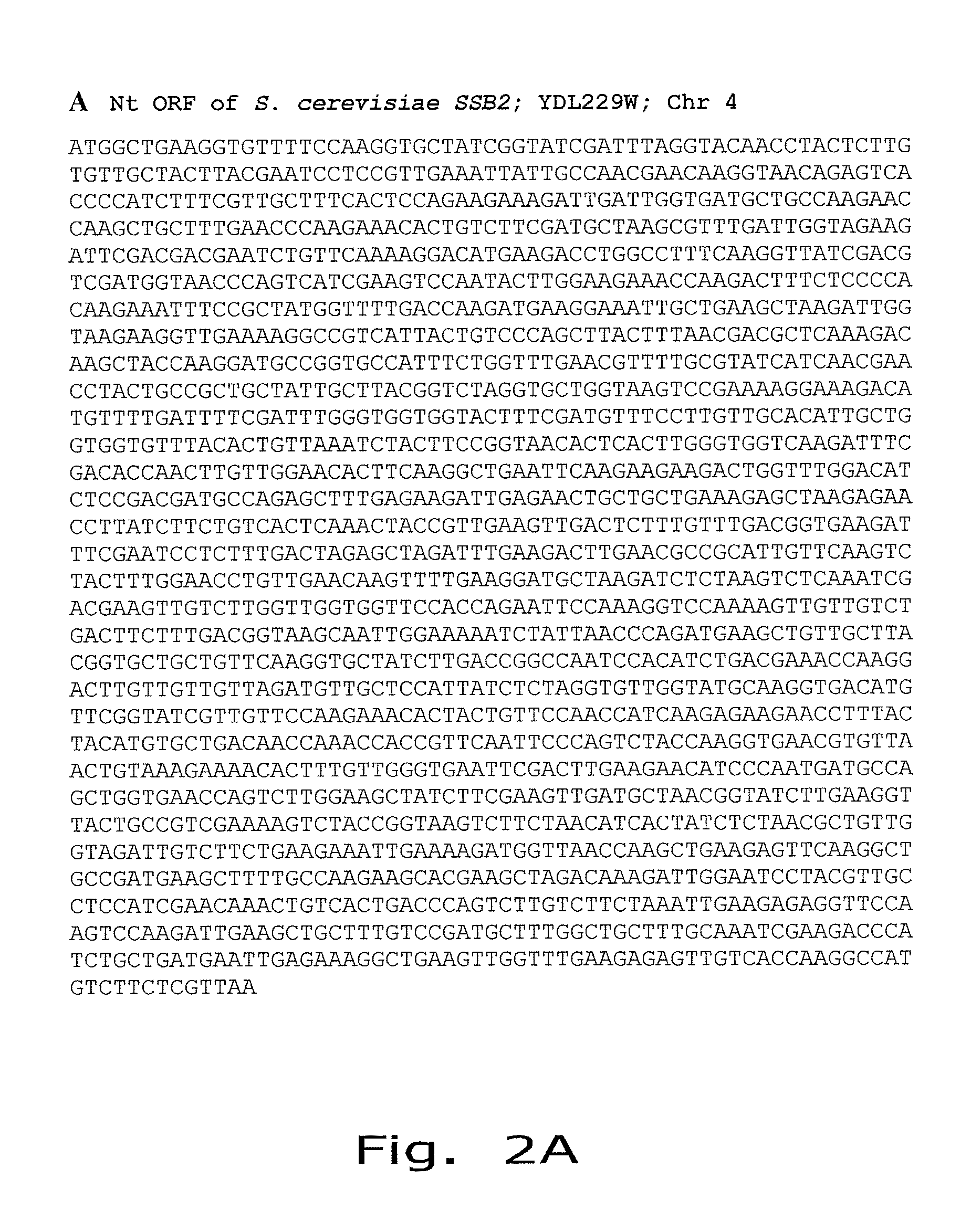Ethanol yield and reduction of biomass accumulation in the recombinant strain of Saccharomyces cerevisiae overexpressing atpase
a technology of saccharomyces cerevisiae and atpase, which is applied in the field of modified yeast, can solve the problems of significant reduction of the potential yield of the primary product, i.e., ethanol that could theoretically, and the approach of z. mobilise, which is not free of serious drawbacks and has not seen further development in the scientific literature. achieve the effect of increasing ethanol production and lowering the level of atp
- Summary
- Abstract
- Description
- Claims
- Application Information
AI Technical Summary
Problems solved by technology
Method used
Image
Examples
Embodiment Construction
[0027]The inventors discovered that lowering the level of ATP yield during growth for alcoholic fermentation in yeast cells can increase ethanol yields and simultaneously drop substrate conversion to biomass. This is accomplished by the construction of yeast strains that yield less ATP during alcoholic fermentation (e.g. one mole ATP, as Z. mobilis does in ED pathway) but without transferring the activities of the ED pathway into the yeast. The resulting yeast strains combine all the available advantages of yeast with the high ethanol yield typified by Z. mobilis. Two approaches for construction of such yeast strains can be used.
[0028]The inventors have discovered that to maintain the ATP level low during yeast alcoholic fermentation through the EMP pathway, it is not necessary to substitute it with the ED pathway activities to lower ATP efficiency. It is possible to maintain the EMP pathway unchanged but to lower the level of ATP by either activation or overexpression of a cytosoli...
PUM
| Property | Measurement | Unit |
|---|---|---|
| concentration | aaaaa | aaaaa |
| total volume | aaaaa | aaaaa |
| concentration | aaaaa | aaaaa |
Abstract
Description
Claims
Application Information
 Login to View More
Login to View More - R&D
- Intellectual Property
- Life Sciences
- Materials
- Tech Scout
- Unparalleled Data Quality
- Higher Quality Content
- 60% Fewer Hallucinations
Browse by: Latest US Patents, China's latest patents, Technical Efficacy Thesaurus, Application Domain, Technology Topic, Popular Technical Reports.
© 2025 PatSnap. All rights reserved.Legal|Privacy policy|Modern Slavery Act Transparency Statement|Sitemap|About US| Contact US: help@patsnap.com



